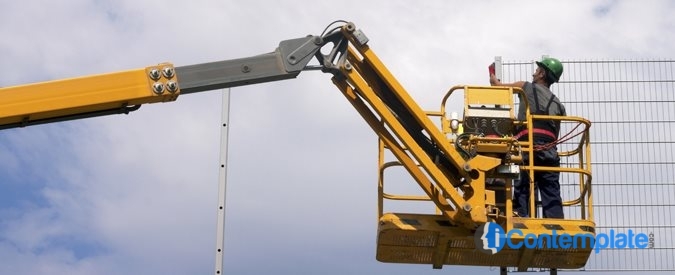<p style="text-align: justify;">Telehandlers are incredibly versatile pieces of kit, making them ideal for use across an entire range of industries and agriculture. The detachable boom means any number of attachments can be used, from shovels to pallet forks to platforms. The latter allows the telehandler to be used as an aerial work platform, hoisting users up to otherwise difficult to reach places to work and fit. Whilst useful, the platform should be used with utmost care to prevent accidents and potential injuries to the operators. This article details how to do just that.</p>
<p style="text-align: justify;">Firstly, it is important to recognise that a telehandler is not designed primarily for lifting people and, whilst a platform or man basket is a useful addition to any company’s arsenal of attachments, it should not be the main reason to invest or hire a telehandler. Cherry pickers or other specifically designed people-lifting machines should be purchased or hired if lifting people is the primary reason for your investment.</p>
<p style="text-align: justify;">With that in mind, a telehandler is one of the most versatile and useful machines available to a variety of different industrial sectors. If a job arises that requires the lifting of a person, this can be safely achieved by following the subsequent advice.</p>
<p style="text-align: justify;">Firstly, the literature that accompanies the platform should be studied carefully before it is attached. Not every telehandler will be approved by its manufacturers for the lifting, so be sure to check before operation. Heed any warnings that the literature contains and only use manufacturer recommended attachments.</p>
<p style="text-align: justify;">As part of this literature study, it is imperative to make yourself familiar with the load charts. It is important to note that the maximum permitted loads are greatly reduced when using a lifting platform. This is because the maximum loads are rated as if forks were attached, rather than a platform. By attaching a platform, you move the load centre above and away from the calculated location, potentially dramatically reducing the maximum allowable load.</p>
<p style="text-align: justify;">When operating the boom it is essential to firstly angle it upwards before lifting it out. Then, on the way down it should be retracted before lowering it down. This minimises the chance of toppling the telehandler. This is another reason to study the load charts carefully. The telehandlers load arc is as important (potentially more important) than its rated capacity. When operating at the bottom of that arc, the telehandler’s capacity is greatly reduced. By reducing the boom angle, if the boom is not retracted, the platform comes down along that arc, dramatically increasing the chances of toppling.</p>
<p style="text-align: justify;">The load to be lifted is naturally a very important factor in the safety of the operation. The literature and load charts will detail the telehandler’s limits, which should be adhered to dutifully. Ensure you take account of the weight of the platform, operator and any machinery or material he or she is planning to take with them on the lift.</p>
<p style="text-align: justify;">The terrain should then be studied before the job begins. Whilst telehandlers are suitable for many terrains, the lifting of people on rough terrain is often best left to a specialist rough-terrain person lifter. A rough-terrain lifter allows the operation of platform from the platform, whilst a telehandler must be operated from the cab. Whilst operating on uneven terrain it is therefore essential to have a second operator to carefully extend the boom.</p>
<p style="text-align: justify;">When using a Roto telehandler (a telehandler that can rotate 360 degrees) extra care should be taken in planning the operating area. A company can <strong>hire Roto telehandlers</strong> from certain telehandler hire firms, who will be able to offer you more advice on utilising these machines safely.</p>
<p style="text-align: justify;">On a similar note, whilst an operator manoeuvres the boom a clear line of sight must be maintained between the cab and the platform. The person in the cab and the person on the platform should have a pre-agreed method of communication, either via a wireless radio, shouts or hand signals. If and when the person in the cab needs to come down they should be able to communicate this to the operator in the cab with ease.</p>
<p style="text-align: justify;">Personal protection equipment (PPE) should be worn by both operators and anyone around the telehandler during its operation. The person on the platform should where a body harness, which is attached to an anchorage point on the platform. The lanyard by which the harness is attached should be shorter than four feet in order to keep the operator within the platform’s guide rails.</p>
<p style="text-align: justify;">Finally, during operation, transferring from the platform to surrounding structures should be avoided unless absolutely necessary. If it cannot be avoided, the structure to which the person is transferring should be deemed sturdy and strong enough to load bear. Be sure to carry out all other operations within the platform’s rails and avoiding excessive leaning or straining over the edge of the platform.</p>

Telehandlers: Lifting People Safely
